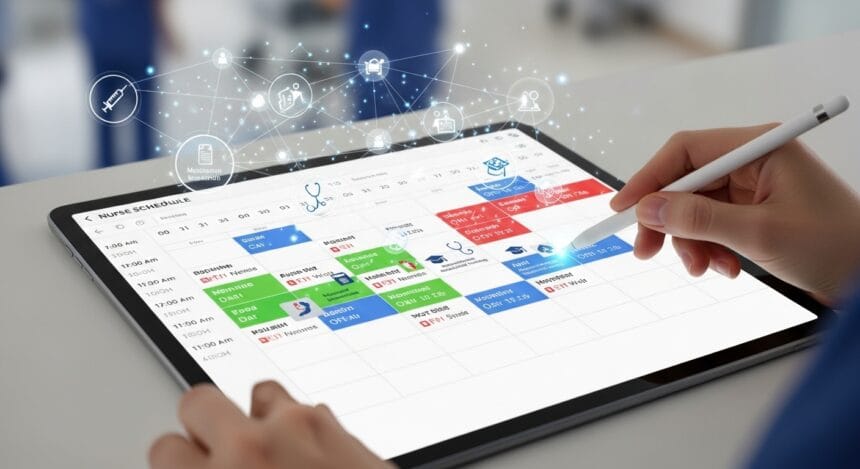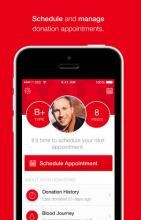Healthcare faces severe staffing issues, with shortages leading to employee burnout and inadequate provider-to-patient ratios. Manual planning has proven inefficient. Even when using digital spreadsheets accessible to all, it can be confusing and difficult to navigate. Because scheduling is critical to quality care and worker satisfaction, hospitals must adopt an automated and systematic solution.
What to Look for in Nurse Scheduling Software
When evaluating shift planning software for medical facilities, focus on solutions that simplify scheduling while ensuring the accurate and reliable management of staff assignments. Key features to consider include:
- Automated shift planning: Administrators should be able to create and adjust schedules quickly based on vacancy, skill set or seniority.
- Self-input availability: Look for platforms that let clinical staff enter their availability, request time off and swap time slots through a mobile or web interface. This reduces conflicts and improves engagement.
- Real-time communication: Nurses should be informed of duty changes, cancellations or urgent personnel needs to reduce understaffed shifts.
- Integration with payroll and HR: Syncing with payroll and time tracking ensures the accuracy of hours worked, overtime pay and compliance with labor regulations, minus the extra administrative overhead.
- Reporting and analytics: Built-in reporting tools provide insights into staffing patterns that could improve future planning.
- CMS compliance: The system must comply with industry standards to meet regulatory requirements.
- Customization: Each facility has unique personnel requirements. The ideal platform should allow customization of rotation rules, roles and notifications.
- Ease of use: An intuitive interface enables minimal training time and facilitates smooth adoption. It also eliminates any potential misunderstandings that could lead to scheduling errors.
What Is the Best Nurse Scheduling Software?
The market has an influx of software claiming to resolve your scheduling woes. Yet, only a select few earn the industry’s trust. Here’s what professionals rely on.
1. Smartlinx
Smartlinx is the most trusted workforce management platform among senior care professionals. It optimizes duty allocations to ensure the right professionals are available based on resident needs and acuity levels. Nurses love that they can schedule adjustments in just a few clicks. Real-time notification and mobile access also allow them to fill call-outs from anywhere.
For supervisors, Smartlinx focuses on a resource-based approach that helps them assign shifts according to qualifications, certifications and staff availability. Its automated system simplifies finding replacements and notifies eligible workers when roster slots open. Smartlinx also integrates employee time and attendance tracking, making it a complete scheduling solution for long-term care and assisted living facilities.
Key Features
| Acuity-based scheduling | Attendance and payroll tracking |
| Automated shift replacement | Self-service mobile app |
2. QGenda
QGenda is a favorite among hospital teams because it simplifies the complexity of manual assignments, filling slots faster while aligning resources with staffing needs. The mobile-first platform empowers nurses to manage their own schedules with ease, offering drag-and-drop functionality for time swaps, split shifts and PTO requests. QGenda also accommodates any preferences, shift structure or coverage requirement, allowing medical personnel to maintain a healthier work-life balance.
Meanwhile, administrators value the software’s visibility into workforce activity. Its out-of-the-box analytics provide insights into past and present trends to inform future human resources decisions and improve the overall cost efficiency.
Key Features
| AI-powered predictive scheduling | Comprehensive workforce analytics |
| Mobile accessible platform | Flexible scheduling framework |
3. Connecteam
Connecteam is a strong choice for healthcare load allocation due to its HIPAA Compliance and automated features. It offers a drag-and-drop interface and, when paired with the auto-assign feature, can quickly fill in roles based on nurse availability, even if there’s a no-show.
Those overseeing schedules appreciate being able to view employee vacancies, qualifications, preferences and time off, which makes rotation distribution quick and easy. Plus, Connecteam’s app helps reach teams immediately through its messaging feature. Teams find the real-time notifications for roster changes and open shifts convenient, since they can claim slots on a first-come, first-served basis.
Key Features
| All-in-one mobile scheduling | Automated time tracking and report |
| Real-time communication tools | Multi-location coordination |
4. Deputy
Deputy keeps teams in sync as staff scheduling goes from complex to simple. It automatically creates the best timetables based on each nurse’s availability, skills and patient needs to rid clinics of messy spreadsheets. Healthcare professionals can easily check, swap or claim slots from their phones to stay flexible and balanced with workload expectations. Meanwhile, managers can track hours, costs and labor rules to keep everything running smoothly.
The platform integrates with digital time clocks and automatic payroll syncing, making approvals and payments faster and more accurate. Deputy also helps prevent burnout through thoughtful shift planning and staff feedback tools. Multi-location facilities benefit from centralized control over workforce allocation and scheduling. Those who use Deputy gain happier nurses, smoother operations and better patient care.
Key Features
| Automated workforce planning | Time tracking and payroll integration |
| Mobile notifications | Fatigue and compliance management |
5. eSchedule
eSchedule takes the headache from schedule assignments by automating, tracking certifications and managing instant updates — all in one platform. Supervisors can easily build work plans based on personnel availability, skill sets and patient care needs, so all shifts are adequately covered.
Automated alerts help prevent overtime and scheduling conflicts, while built-in compliance tools align staffing with healthcare regulations. Nurses can access their timetables anytime through the mobile app to swap slots, request time off or check updates. By reducing manual effort, eSchedule saves time, enhances team communication and helps create a more balanced and efficient workplace.
Key Features
| Certification and compliance tracking | Live communication and alerts |
| Mobile self-service access | Automated scheduling engine |
6. ShiftWizard
ShiftWizard by HealthStream stands out for its deep integration and enterprise-level visibility. It’s the only shift allocation platform with Workday-certified interoperability, allowing seamless data flow between HR, payroll and scheduling systems.
Unlike other tools limited to fixed schedules, ShiftWizard supports dynamic, customizable work periods and uses predictive analytics to forecast human resource needs based on patient volume and acuity. Its multi-facility dashboard lets administrators oversee multiple departments in one view, ensuring consistent standards. ShiftWizard’s unique monetary and nonmonetary incentive points keep staff connected and motivated toward filling hard-to-cover hours.
Key Features
| Incentive program support | Dynamic shift periods |
| Multi-channel messaging center | Predictive staffing |
7. Sling
Sling is a comprehensive, user-friendly workforce planner that streamlines shift management, time tracking and team communication in one place. Its intuitive drag-and-drop function allows supervisors to build balanced nurse schedules, prevent “clopening” shifts and stay within labor budgets.
Sling’s built-in time clock with geofencing ensures accurate attendance, while real-time cost alerts help control overtime. The software also supports license tracking, emergency shift coverage and direct employee messaging for faster coordination. Affordable and easy to use, Sling empowers clinical teams to simplify scheduling, enhance collaboration and maintain optimal staffing for quality patient care.
Key Features
| Drag-and-drop scheduling | Built-in communication and news feed |
| Mobile time clock with geofencing | Labor cost management |
Methodology for Selecting the Best Nurse Scheduling Solutions
These criteria ensure that the solutions reviewed understand healthcare’s unique challenges to make scheduling professionals easier than manual means.
| Healthcare-specific | An industry-specific tool ensures it provides advanced features tailored to the complexities of clinical scheduling. |
| Intelligent scheduling | AI-powered automated assignment tools are prioritized to ensure the right staff or qualified alternatives are available, reducing manual oversight. |
| Communication tools | Built-in messaging features make it easier to inform employees about open shifts so they can quickly fill roles and maintain coverage. |
| Credential management | Advanced scheduling software can automatically match skills and certifications, ensuring only qualified nurses are assigned to specific roles. |
| Integrations | Integrations with time tracking, attendance and payroll systems reduce the need for separate programs. |
Say Goodbye to Manual Scheduling
Traditional shift allocation methods were inefficient and are best left in the past. With today’s advanced staff scheduling solutions designed specifically for healthcare professionals, clinics and hospitals can focus more on patient care instead of scrambling to fill open slots. For frontline workers, the best tools empower nurses to deliver better care with less stress.







